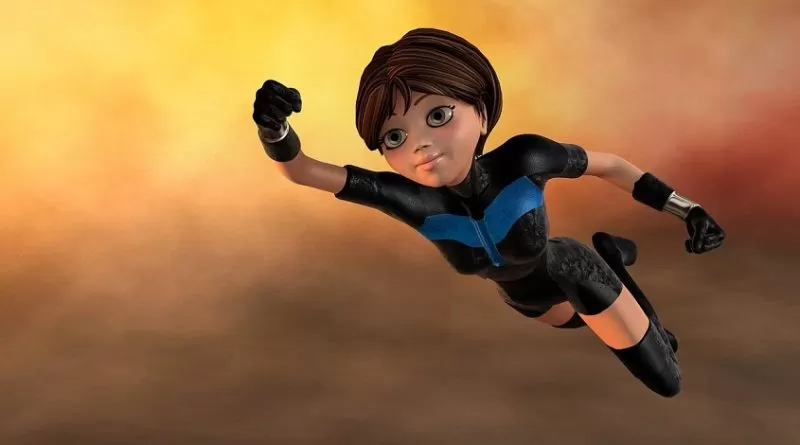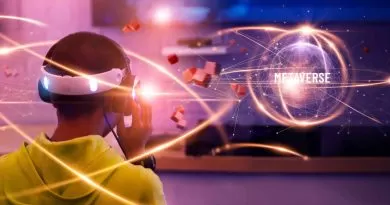Immerse Yourself in the World of 3D Comics and Artwork
This article explores the use of 3D graphics in comics, highlighting its advantages like creating immersive environments, expressive characters, and interactive storytelling. It also mentions the benefits of Metaverse 3D comics, such as personalized experiences, interactive storytelling, and new business opportunities.
The world of technology is constantly evolving, and the concept of Metaverse has recently gained significant attention in the IT industry. At its core, Metaverse is a virtual world where users can interact with each other and digital objects in a shared space. This virtual world is not limited by physical boundaries and allows for seamless integration between real-world and digital experiences. The term “Metaverse” was first introduced in Neal Stephenson’s science-fiction novel “Snow Crash” in 1992, but the concept has since evolved and gained popularity in the tech industry.
Along with Metaverse, the use of 3D graphics in comics and artwork has also become increasingly popular in recent years. 3D graphics provide a more immersive visual experience for readers and allow creators to bring their stories to life in new and innovative ways. By combining the power of Metaverse and 3D graphics, creators can provide a completely new experience for users, revolutionizing the way we interact with digital content.
3D Comics and Artwork
3D graphics have become an integral part of the entertainment industry, including the world of comics and artwork. With 3D graphics, creators can provide a more immersive and realistic visual experience for their audience. 3D graphics enable creators to add depth, texture, and lighting to their creations, bringing them to life in ways that were previously impossible.
3D comics and artwork offer a new way of experiencing stories and art. They provide a unique and engaging experience that goes beyond traditional 2D comics and artwork. With 3D comics, creators can add dynamic camera angles, lighting effects, and special effects to their stories, enhancing the overall experience for readers. Similarly, 3D artwork can provide a more realistic and immersive experience for viewers, allowing them to appreciate the artwork in a whole new way.
Integrating 3D Graphics into the Metaverse
Metaverse is a virtual world where people can interact with each other in real-time using avatars, while 3D graphics provide an immersive and visually appealing experience to the audience. The integration of 3D graphics into the Metaverse has revolutionized the way we consume and interact with media. In this section, we will discuss how 3D comics and artwork are integrated into the Metaverse and the advantages of using 3D graphics in comics.
How 3D comics and artwork are integrated into the Metaverse
Metaverse platforms such as Decentraland, Somnium Space, and Second Life allow creators to build their own virtual worlds and integrate 3D graphics into them. These 3D graphics can be used to create characters, environments, objects, and special effects in a virtual space. In the case of 3D comics, creators can use the Metaverse platform to publish and distribute their content in a more interactive and engaging way.
One example of how 3D graphics can be integrated into the Metaverse is through the use of virtual reality (VR) headsets. With a VR headset, users can fully immerse themselves in the virtual world, and experience the 3D graphics in a more realistic and engaging way. This allows for a more immersive storytelling experience, and can make the audience feel like they are part of the story.
Another way 3D graphics can be integrated into the Metaverse is through the use of augmented reality (AR). AR allows creators to overlay 3D graphics onto the real world, creating an interactive and engaging experience for the audience. This can be especially useful for comics that are location-based or interactive, allowing the audience to experience the story in a more personalized way.
Advantages of using 3D graphics in comics
Using 3D graphics in comics provides several advantages over traditional 2D comics. One of the biggest advantages is the ability to create immersive and engaging environments. With 3D graphics, creators can create realistic and detailed environments, which can transport the audience to different worlds and make them feel like they are part of the story.
Another advantage of using 3D graphics in comics is the ability to create dynamic and expressive characters. 3D characters can be fully animated, allowing for a wider range of expressions and movements. This can make the characters feel more alive and relatable, and can help the audience connect with them on a deeper level.
Benefits of Metaverse 3D Comics and Artwork
Metaverse 3D comics and artwork offer a range of benefits that make them an exciting and innovative addition to the world of comics. Here are three key benefits:
Immersive and interactive storytelling
One of the key advantages of Metaverse 3D comics and artwork is the ability to create immersive and interactive storytelling experiences. By leveraging the power of 3D graphics, creators can bring their stories to life in a way that is much more engaging and impactful than traditional 2D comics.
With Metaverse 3D comics, readers can explore richly detailed environments, interact with characters and objects, and even make choices that impact the direction of the story. This level of interactivity and immersion can help to draw readers into the story and create a more memorable and impactful experience.
Enhanced visual experience
Another major advantage of Metaverse 3D comics and artwork is the enhanced visual experience they offer. By using 3D graphics, creators can create stunningly realistic environments and characters that are much more visually appealing than traditional 2D comics.
This enhanced visual experience can help to capture the attention of readers and keep them engaged with the story. It can also help to create a sense of awe and wonder that is often missing from traditional comics.
Increased engagement and interactivity with the audience
Finally, Metaverse 3D comics and artwork offer increased engagement and interactivity with the audience. By allowing readers to interact with the story and make choices that impact the direction of the narrative, creators can create a more engaging and interactive experience.
This increased engagement can help to create a sense of investment in the story, as readers become more emotionally invested in the characters and their journey. It can also help to create a sense of community, as readers share their experiences and discuss the story with each other.
Overall, Metaverse 3D comics and artwork offer a range of benefits that make them an exciting and innovative addition to the world of comics. From immersive and interactive storytelling to enhanced visual experiences and increased engagement with the audience, these comics offer a unique and compelling experience that is sure to captivate readers.
Metaverse 3D Comics and Artwork: The Future of Comics
As technology continues to advance, so does the world of comics. Metaverse 3D comics and artwork are rapidly changing the landscape of comics and paving the way for new and innovative forms of storytelling. In this section, we’ll explore how Metaverse 3D comics and artwork are shaping the future of comics and the potential they hold.
How Metaverse 3D comics and artwork are changing the landscape of comics
Traditional comics have always been 2D, static images that are arranged in panels to tell a story. However, with the advent of Metaverse 3D comics and artwork, creators can now use 3D graphics to tell their stories in a much more immersive and interactive way. This new medium allows creators to fully immerse their audience in a 3D world, where they can explore and interact with the story in ways that were never before possible.
Metaverse 3D comics and artwork are also changing the way stories are told. Rather than relying solely on text and images, creators can now incorporate sound, music, and even haptic feedback to enhance the storytelling experience. This creates a more dynamic and engaging experience for readers, who can fully immerse themselves in the story and feel like they are part of it.
Additionally, Metaverse 3D comics and artwork are not limited to the page. They can be experienced across multiple platforms, including virtual reality and augmented reality. This opens up a whole new realm of possibilities for storytelling and allows creators to reach a wider audience.
Potential for new and innovative forms of storytelling
With the introduction of Metaverse 3D comics and artwork, creators have the opportunity to explore new and innovative forms of storytelling. By incorporating 3D graphics and other multimedia elements, they can create stories that are truly immersive and interactive.
One potential avenue for exploration is the use of branching narratives. With Metaverse 3D comics and artwork, creators can create multiple story paths that readers can choose from, allowing for a more personalized and unique reading experience. This has the potential to make reading comics more like playing a video game, where the reader’s choices have a direct impact on the story.
Another potential area for innovation is the use of artificial intelligence (AI) and machine learning. By incorporating AI into Metaverse 3D comics and artwork, creators can create more dynamic and responsive stories. For example, the story could adapt to the reader’s preferences and choices, making the experience more personalized and engaging.
Overall, the potential for new and innovative forms of storytelling with Metaverse 3D comics and artwork is virtually limitless. As technology continues to evolve, creators will have more tools at their disposal to push the boundaries of storytelling and create truly immersive and interactive experiences for readers.
Creating Metaverse 3D Comics and Artwork
Creating Metaverse 3D comics and artwork is a complex process that requires a combination of artistic talent, technical skills, and familiarity with the digital tools and platforms used to produce this type of content. The creative process can be broken down into several key stages:
- Concept Development: This is the initial stage of the creative process where artists and writers brainstorm ideas and develop the core concepts for their 3D comic or artwork. This stage involves defining the story, characters, setting, and tone of the piece.
- Modeling: Once the concept is finalized, the next step is to create the 3D models of the characters, objects, and environments. This involves using specialized software to create detailed digital models that can be manipulated in various ways.
- Texturing: After the 3D models are created, the next stage involves adding textures and colors to the models to bring them to life. This is done using specialized tools that allow artists to apply various materials, textures, and lighting effects to their models.
- Rigging and Animation: Once the 3D models are textured, the next stage involves rigging the models so that they can be animated. This involves creating a skeleton for the models and attaching it to the 3D models so that they can be moved and posed.
- Rendering: After the models are rigged and animated, the next stage involves rendering the final image or animation. This is done using specialized software that combines the 3D models, textures, and animations to create the final image or animation.
Tools and Software Required for Creating Metaverse 3D Comics and Artwork
To create Metaverse 3D comics and artwork, artists and writers need to have access to a range of specialized tools and software, including:
- 3D Modeling Software: This software is used to create 3D models of characters, objects, and environments. Some popular examples include Blender, Maya, and 3ds Max.
- Texture and Material Creation Software: This software is used to add textures, colors, and lighting effects to 3D models. Popular examples include Substance Painter and Adobe Photoshop.
- Animation Software: This software is used to rig and animate 3D models. Popular examples include Autodesk MotionBuilder and Blender.
- Rendering Software: This software is used to render the final image or animation. Popular examples include Arnold, V-Ray, and Redshift.



